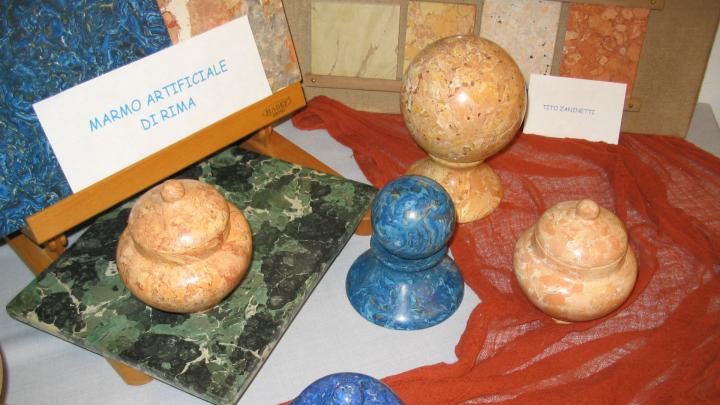The technique of artificial marble was a typical activity traditionally carried out by the inhabitants of Rima, which one can see at the historic building in the small village of Valsesia, now called the Casa del Marmo (House of marble) or the Museo del marmo artificiale (Museum of artificial marble). Starting from 1830, this artisan form of artificial marble procured great riches and honors in the courts across Europe. Artificial marbles had always been made, but the system used by the ‘rimesi’ people of Rima, gave exceptional results, able to even deceive the leading experts in the field.
A blend of white concrete was prepared, to which a base color was added, while in the crevices hues similar to the veins of the marble were added, so one could imitate the real marble features. The composite obtained was then applied to the surface to be coated. It was allowed to adhere to the wall, then the surface was smoothed first with a trowel and then with seven different stones, gradually getting harder. The results were surprisingly beautiful.

